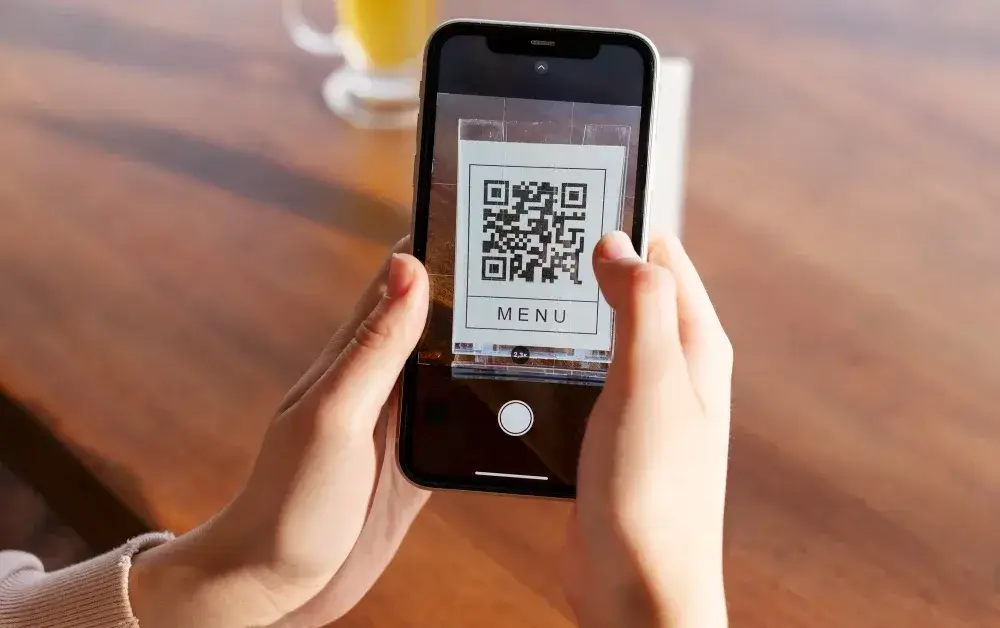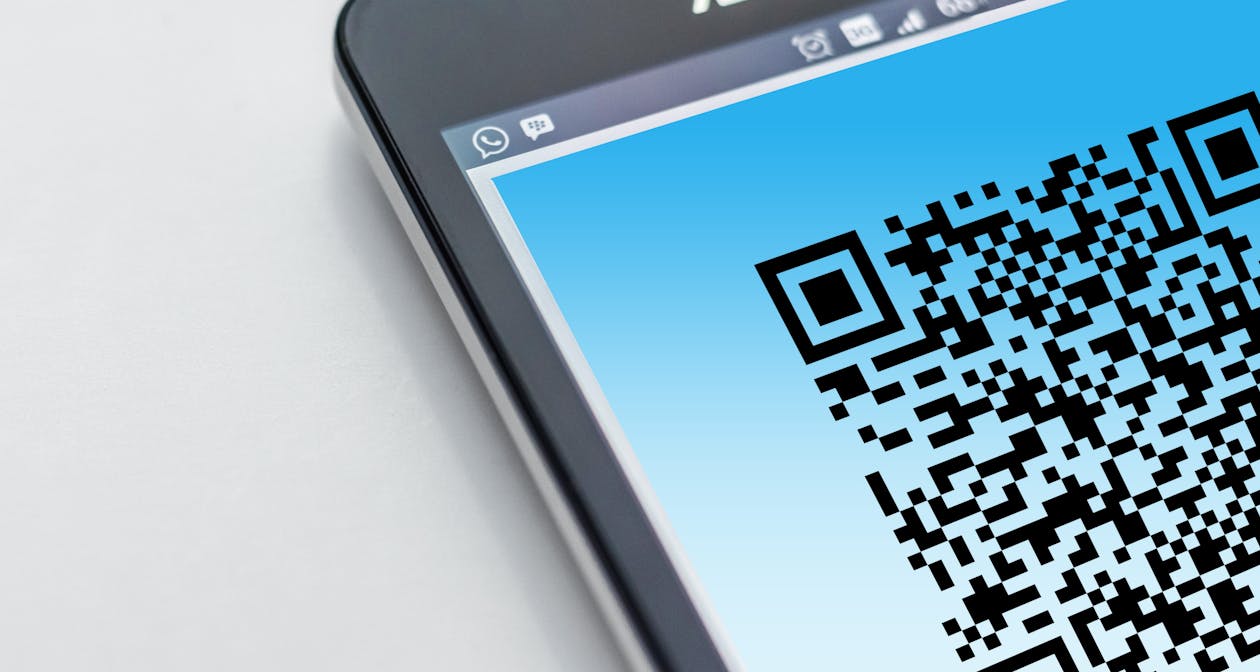In the vibrant streets of India, among the hustle and bustle of everyday life, a silent yet powerful tool is revolutionizing our digital interactions – the QR code, or as we fondly call it, the Quick Response code.

From small local shops to tech giants, it has become an integral part of our lives, seamlessly bridging the gap between the physical and digital worlds. Let’s embark on a comprehensive exploration to understand the evolution, applications, and future trends of QRs in India.
Table of Contents
Evolution of QR Codes:
Originating in Japan in the 1990s, QRs were initially developed for tracking automotive parts during manufacturing. These square-shaped codes were capable of storing large amounts of data compared to traditional barcodes.
However, it wasn’t until the early 2000s that QRs started gaining widespread popularity, primarily driven by the advancement of mobile technology and the need for more efficient data encoding methods.
In India, the adoption of QRs saw a significant uptick in the late 2000s, fueled by the rapid penetration of smartphones and the digital revolution spurred by initiatives like Digital India. What started as a novel way to encode information quickly transitioned into a versatile tool with applications across various industries.
From marketing to payments, Quick Response Code became ubiquitous in the Indian landscape, reshaping the way businesses interacted with consumers and vice versa.
Applications of QR Codes in India:

Payment Solutions:
QRs have emerged as a ubiquitous payment solution in India, especially with the rise of digital wallets and Unified Payments Interface (UPI). Businesses of all sizes, from street vendors to large retailers, leverage QR codes to accept payments seamlessly.
What once required physical cash transactions can now be completed with a simple scan of a QR code, offering convenience and security to both merchants and consumers.
Services like Paytm, Google Pay, and PhonePe played a pivotal role in popularizing QR-based payments in India. These platforms not only facilitated peer-to-peer transactions but also enabled merchants to accept payments directly into their bank accounts with minimal hassle.
The ease of use, coupled with cashback offers and rewards, incentivized users to embrace digital payments, further accelerating the adoption of QRs across the country.
Contactless Menu Ordering:
The COVID-19 pandemic brought about a paradigm shift in the way businesses operate, particularly in the hospitality industry. To minimize physical contact and adhere to social distancing norms, restaurants and cafes across India turned to QRs for contactless menu ordering.
Customers could simply scan a QR code placed on their table using their smartphones to access the digital menu, browse through options, and place their orders without the need for physical menus or interaction with waitstaff.
This innovative approach not only enhanced safety measures but also improved operational efficiency for businesses. With digital menus, restaurants could update offerings in real-time, showcase promotions, and gather valuable feedback from customers.
As dining establishments gradually reopened post-lockdown, QRs became synonymous with the new normal, revolutionizing the dining experience in India.
Marketing and Advertising:
QRs have become a staple in marketing campaigns, offering an interactive way to engage consumers and drive conversions. Brands across various industries leverage QR codes on product packaging, posters, print advertisements, and digital platforms to provide additional information, promotional offers, and exclusive content to consumers.
For instance, a consumer scanning a QR code on a product label could be directed to a landing page with detailed product specifications, customer reviews, and purchasing options. Similarly, QRs embedded in advertisements could lead users to interactive experiences such as augmented reality (AR) demos, promotional videos, or social media campaigns.
By seamlessly integrating digital content with physical touchpoints, QRs enable brands to create immersive experiences that resonate with consumers.
Public Transportation:
Public transportation systems in India have also embraced QRs to streamline ticketing and fare collection processes. Commuters can now purchase tickets or access travel information with ease by scanning QRs at ticket counters, kiosks, or on vehicles.
This digitization of transportation not only enhances convenience for passengers but also contributes to the government’s vision of Smart Cities and sustainable urban mobility solutions.
By leveraging QRs, public transit agencies can reduce reliance on traditional paper tickets, tokens, or smart cards, thus minimizing operational costs and environmental impact. Additionally, QR code-based ticketing systems offer greater flexibility and scalability, allowing for seamless integration with mobile apps, fare collection gates, and real-time passenger information systems.
As cities continue to invest in smart infrastructure, QRs will play a crucial role in shaping the future of public transportation in India.
Future Trends and Innovations:
QR Code Integration with IoT:
The convergence of QRs with Internet of Things (IoT) technology holds immense potential for enhancing connectivity and enabling seamless interactions between physical objects and digital networks. Imagine a scenario where consumers can scan a QR code on a product to access real-time data about its origin, manufacturing process, and environmental impact.
Similarly, QRs could be integrated into smart home devices, allowing users to control appliances, monitor energy usage, and receive maintenance alerts through their smartphones. As IoT adoption continues to grow in India, QRs will serve as the bridge that connects the physical world with the digital realm, unlocking new opportunities for innovation and efficiency across various sectors.
Enhanced Security Measures:
With the proliferation of digital transactions and the increasing threat of cyber attacks, there is a growing need to enhance the security features of QR code. Advanced encryption techniques, biometric authentication, and blockchain technology are being explored to bolster the security of QR code-based systems and prevent unauthorized access or tampering of data.
For instance, QRs embedded with digital signatures or cryptographic keys can ensure the authenticity and integrity of transactions, thereby mitigating the risk of fraud or data breaches. Biometric authentication methods such as fingerprint or facial recognition can add an extra layer of security to QR code-based payments, making them more resistant to unauthorized access or identity theft. As security concerns loom large in the digital landscape, investing in robust security measures will be paramount to fostering trust and confidence in QR code technology.
Personalized Customer Experiences:
Advancements in machine learning algorithms and data analytics are revolutionizing the way QRs are utilized in marketing and customer engagement strategies. By analyzing consumer behavior, preferences, and purchase history, brands can create personalized QR code experiences that resonate with individual users on a deeper level.
For example, a retail brand could generate QRs that offer personalized discounts or recommendations based on a customer’s past purchases or browsing history. Similarly, QR codes embedded in loyalty programs or customer surveys can gather valuable feedback and insights that help businesses tailor their products and services to meet evolving consumer needs.
QR Code Generator Tools:
The proliferation of QR code generator tools has democratized the creation and deployment of QRs, empowering businesses and individuals to leverage this technology for various purposes. Websites like The QR Code Generator offer user-friendly interfaces that allow users to generate QR quickly and efficiently.
These platforms provide a range of customization options, including the ability to embed logos, change colors, and select different QR code types such as URL, text, WiFi, and more. Users can also track the performance of their QRs by monitoring scan analytics, enabling them to optimize their marketing campaigns and improve engagement metrics.
QR code generator tools have become indispensable for businesses looking to incorporate QRs into their marketing collateral, product packaging, and digital assets. Whether it’s creating dynamic QRs for promotional offers, event invitations, or contactless payment solutions, these platforms offer unparalleled flexibility and convenience.
QR Code-Based Authentication:
In addition to traditional applications such as payments and marketing, QRs are increasingly being used for authentication purposes across various industries. From secure login procedures to access control systems, QRs offer a convenient and secure method of identity verification.
For example, some banks and financial institutions use QR codes as part of their two-factor authentication (2FA) process. Users are required to scan a QR code displayed on their computer screen using their mobile banking app to authenticate their login credentials, adding an extra layer of security to online transactions.
Similarly, QR codes can be integrated into visitor management systems at office buildings, schools, and events to streamline check-in procedures and track attendance. By scanning a QR code on their mobile devices, visitors can register their arrival and gain access to designated areas, ensuring a smooth and secure entry process.
QR Code-Based Health Services:

The COVID-19 pandemic highlighted the importance of leveraging technology to support public health initiatives and mitigate the spread of infectious diseases. QR codes have emerged as a valuable tool for facilitating contact tracing, vaccination records, and health screenings in various settings.
Several countries, including India, have implemented QR code-based systems for verifying vaccination status and COVID-19 test results. Individuals can generate QRs containing their health information through official government portals or healthcare providers, which can then be scanned by authorities to verify their status before entering public spaces or traveling.
Beyond COVID-19, QR codes hold potential for enhancing access to healthcare services and medical records in India. Patients can use QRs to securely access their electronic health records, schedule appointments, and receive medication reminders through mobile apps and telemedicine platforms.
Final Words:
In conclusion, the widespread adoption of QR codes in India has transformed the way we interact with technology, conduct business, and navigate our daily lives. From simplifying payments and enhancing safety measures to enabling personalized marketing campaigns and facilitating secure authentication processes, QRs have become indispensable tools for businesses, government agencies, and individuals alike.
As we continue to innovate and explore new applications for QRs, the possibilities are endless. Whether it’s integrating QR codes with emerging technologies like IoT and blockchain or leveraging them for public health initiatives and authentication purposes, QRs will continue to shape the future of digital interactions in India and beyond.
So the next time you scan a QR code, whether it’s to make a payment, access information, or verify your identity, remember that you’re experiencing firsthand the transformative power of this humble yet powerful technology. And if you’re looking to create your own QRs, don’t forget to check out The QR Code Generator for all your QR code needs!






